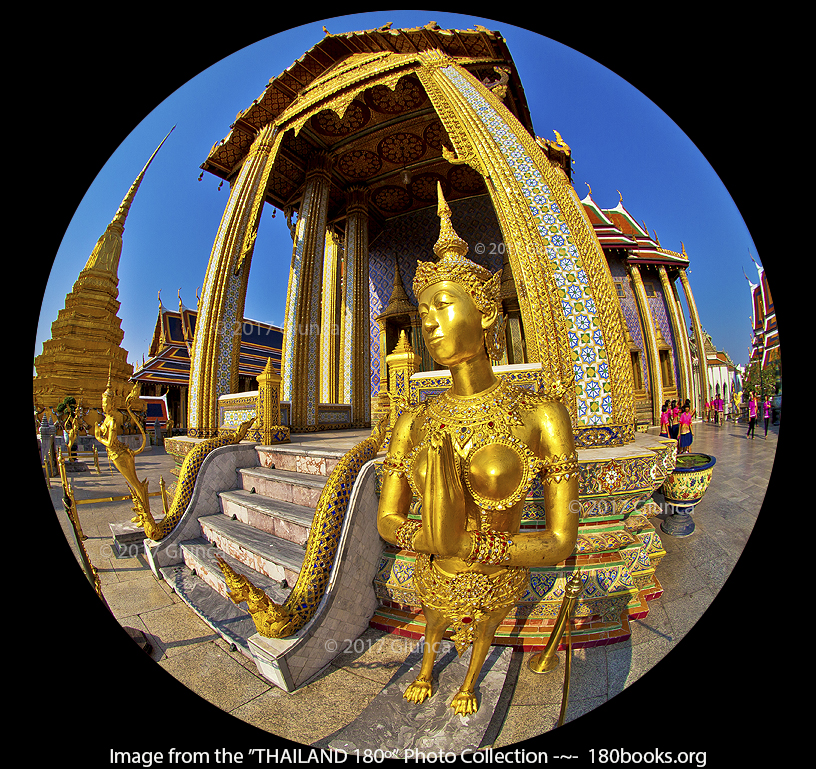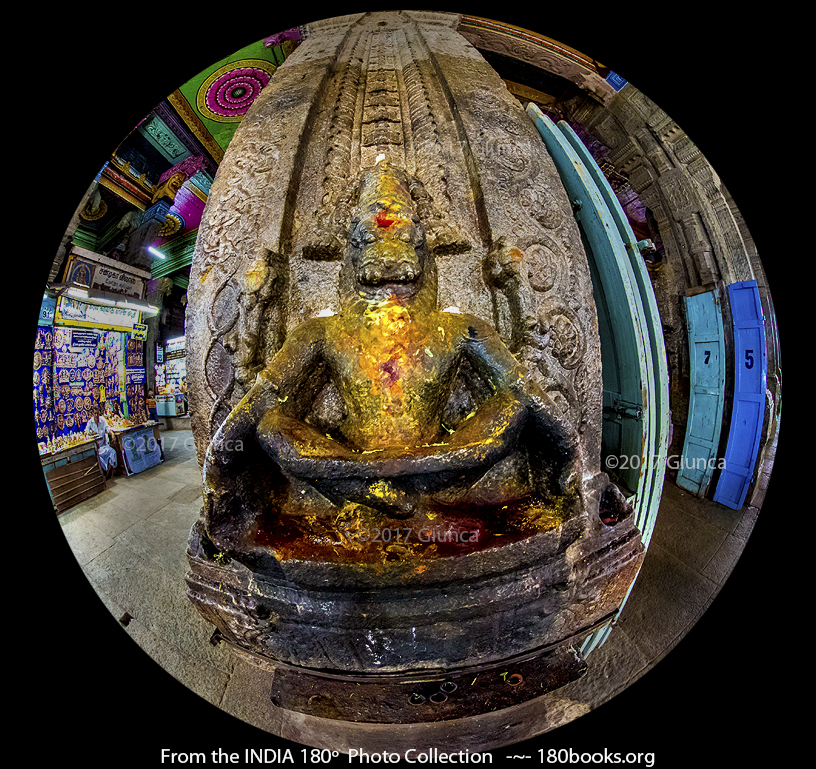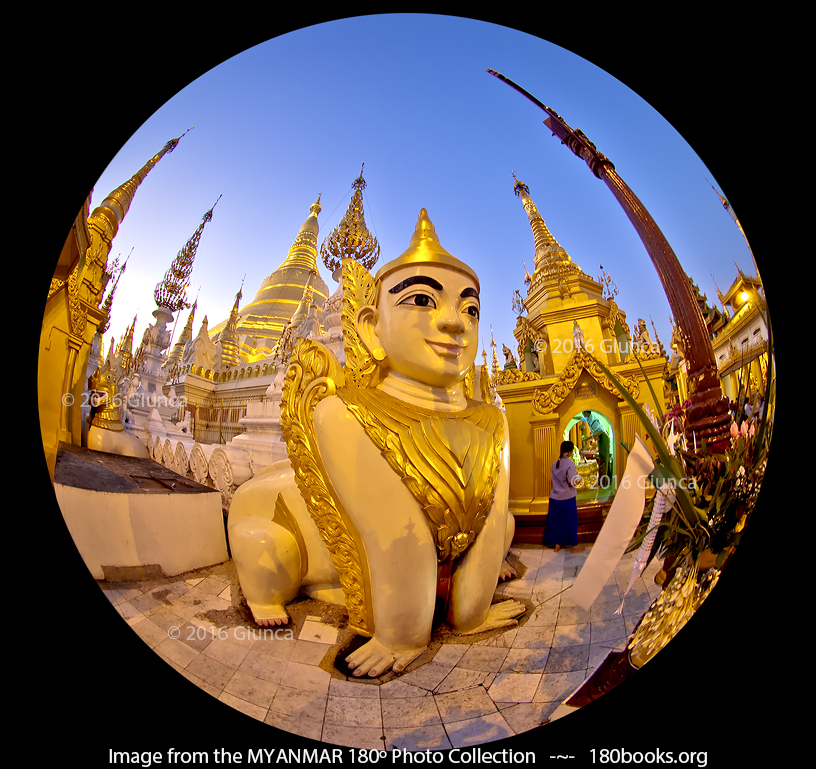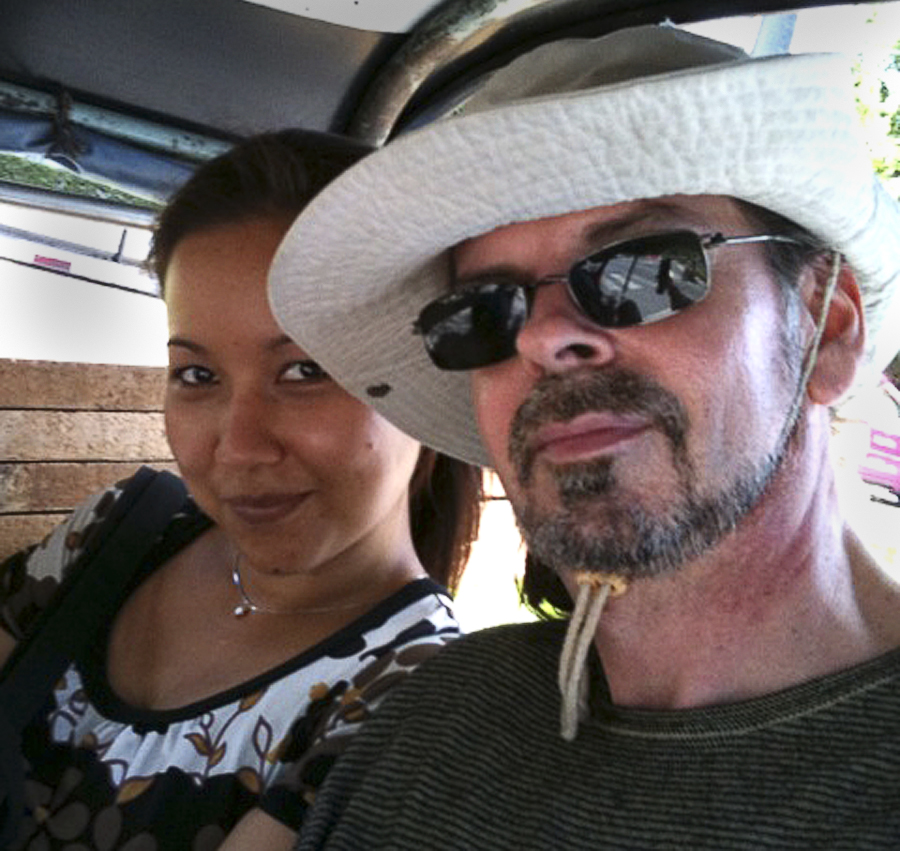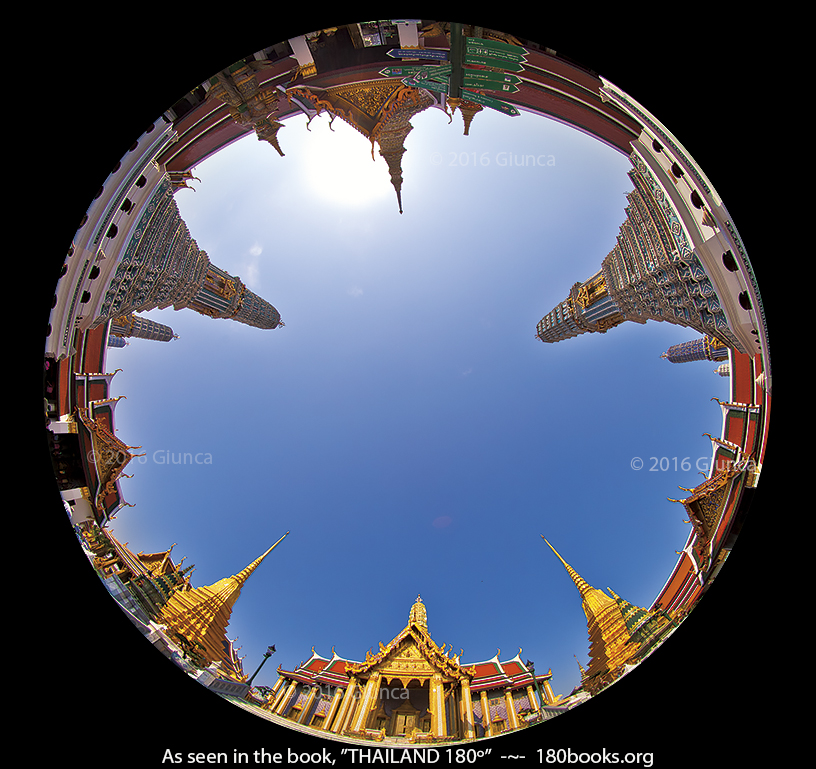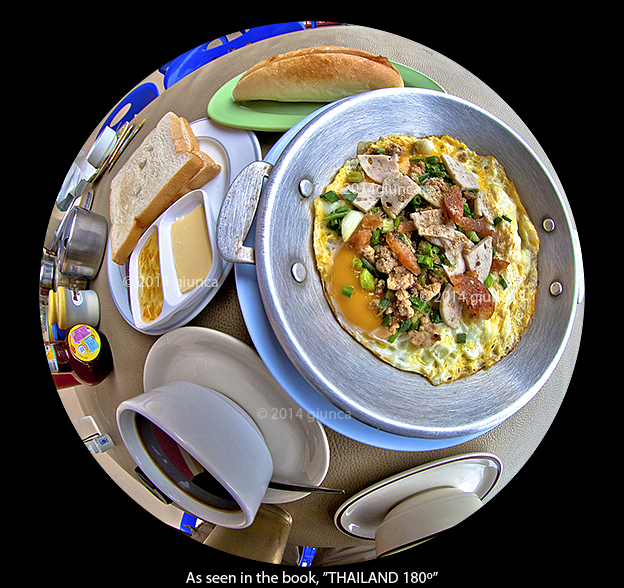The Secret Lives of Lion-Men : นรสิงห์
“Life is Short; Art is Long.” ~ Hippocrates
Since Fon and I love mythology, we tend to notice creatures in artwork when we travel, especially if a creature appears to be Half-man and half-animal. On many of our travels, we’ve observed a creature that was half-man and half lion. There are several different types of these, usually at temples or other auspicious places. It can be very confusing, but let’s go ahead and begin our lion-man safari.
“ศิลปวิทยาการนั้นยืนยาว แต่ชีวิตคนเรานั้นสั้นนัก…” – ฮิปพอคราทีส (Hippocrates)
ฝนไม่ได้ติ๊สต์ ขนาดน้านนน…แต่คุณเอ็ดเวิร์ดนี่มากกกกกกก!! ประโยคข้างต้นนั้นท่านฮิปพอคราทีส หมายถึงศิลปวิยาการทุกแขนง เราจึงมานั่งดูภาพงานประติมากรรมจากสถานที่ต่างๆ ที่เคยไปมาก็ทำให้คิดได้ว่างานศิลป์นั้นมีคุณค่าและยืนยาวจริงๆ บางแห่งที่จะนำมาเล่าถึงในบล็อกนี้สร้างขึ้นตั้งแต่ศตวรรษที่ ๘ อยู่ยั้งยืนยงมาจนเราได้ไปชม, เรียนรู้ และนำมาศึกษาค้นคว้าต่อ — เพิ่มรอยหยักให้สมอง
ประเด็นหลักของบล็อกนี้ยังอยู่ที่สัตว์ลูกผสม และบล็อกนี้จะกล่าวถึงลูกผสม “ครึ่งสิงห์-ครึ่งมนุษย์” สิงห์เป็นสัตว์หิมพานต์อีกชนิดหนึ่งที่มีความสง่า น่าเกรงขาม และมีพละกำลังมาก โดยมากจะพบเห็นสิงห์และสัตว์ลูกผสมต่างๆ ตามวัด, ศาสนสถาน รวมถึงสถานที่ศักดิ์สิทธิ์ทั้งในศาสนาพุทธและฮินดู
Narasingha at Wat Phrakaew – เทพนรสิงห์ ณ วัดพระแก้ว
According to Thai Buddhist cosmology, “Narasingha” are semi-divine beings which are half-man and half-lion. They dwell in the Himmaphan forest along with their female counterpart “Apsarasingha,” which are half-woman and half-lion creatures. The Sanskrit name Apsarasingha is the result of merging the words for Apsaras (अप्सरा) who are celestial nymphs and dancers in the court of Indra, with Siṃha (सिंह), the Sanskrit word for lion.
Last week in our blog, we mistook this beautiful example of an Apsarasingha for a Kinnaree. But, on closer examination, we found that she has the tail of a lion, not a horse. Well, in my defense, every time I went on a tour of Wat Phra Kaew, I was told that this was a Kinnaree, so I’m not the only one that’s confused. For more on Kinnaras, have a look at our blog Here.
ในศิลปกรรมไทยนั้น “นรสีห์” หรือ “นรสิงห์” เป็นครึ่งมนุษย์-ครึ่งสิงห์ นับเป็นกึ่งเทพ เรียกว่า “เทพนรสิงห์” และเพศเมียเรียกว่า “อัปสรสีห์” ในพจนานุกรมฉบับราชบัณฑิตยสภา “อัปสรสีห์ (อ่านว่า อับ-สอน-สี) ประกอบด้วยคำว่า อัปสร (อ่านว่า อับ-สอน) ซึ่งแปลว่า นางฟ้า. ส่วน สีห์ มาจากคำว่า สีห (อ่านว่า สี-หะ) แปลว่า ราชสีห์. อัปสรสีห์ เป็นสัตว์หิมพานต์ชนิดหนึ่ง กายท่อนบนเป็นมนุษย์ผู้หญิง ท่อนล่างเป็นราชสีห์ น่องมีแผงขนแต่เท้าเป็นกีบคู่อย่างกีบตีนกวาง ผิวกายสีเหลือง.” อย่างเช่น อัปสรสีห์นางนี้ ซึ่งคราวก่อนเราสับสนกับรูปลักษณ์ของนาง คิดว่าเป็นกินนรี ดูไปดูมาแล้วหางของนางไม่เหมือนหางม้าแต่เหมือนหางสิงห์ สรุปนางคือนรสิงห์ตัวเมียที่เรียกว่า อัปสรสีห์ อยู่ตรงเชิงบันไดกลางลานด้านหน้าปราสาทพระเทพบิดร ณ วัดพระแก้ว คาดว่าหล่อขึ้นในช่วงรัชกาล ๕-๖ ก็นับเป็นเวลาร้อยกว่าปีแล้ว
An incarnation of Vishnu, Narasimha – นรสีห์ พระนารายณ์อวตาร
Of the three main Hindu Gods, Lord Vishnu is known as the preserver and protector. When the balance of good over evil is in jeopardy, he sends himself to earth, reborn as an avatar that is designed to fight off the evil that threatens to destroy the planet or even the whole cosmos. By some accounts this has happened ten times; by others, an infinite number of times. I found the children’s animated movie Dashavatar a fun way to learn about the most popular of his avatars.
The photo above shows the fourth avatar of Lord Vishnu when his avatar was Narasimha, man-lion. Briefly, Hiranyakashipu wanted to take revenge on Lord Vishnu, by destroying him and all of his followers. To do this, Hiranyakashipu asked for a boon from Brahma, the God of Creation, that he believed would make him invincible and unable to be killed. Since Brahma couldn’t make any mortal immortal, Hiranyakashipu, asked for a favor that he worded in such a way that any lawyer would be jealous of. He asked, “May I not die on Earth or in space; nor in water or fire; not during the day or night; not in or outside of a home; and not be killed by a human, god, nor animal; nor by an animate or inanimate being.” No sooner had Brahman granted his boon than he began his fearless reign of terror. He announced that he was god and forbade anyone else to utter another god’s name. There was a problem though in that Hiranyakashipu’s son Prahlada was a devotee of Lord Vishnu and failed to see any change in his father that made him godlike.
ต้นกำเนิดเหล่าเทพและสัตว์ของเทพในตำนานที่มีอิทธิพลต่อศิลปะไทยก็คือ อินเดีย ในปกรณัมและคัมภีร์ฮินดู กล่าวถึง “นรสีห์” ว่าเป็นอวตารปางที่ ๔ ของพระวิษณุหรือพระนารายณ์อวตาร มีร่างกายเป็นมนุษย์และส่วนศีรษะเป็นสิงห์ “สิงห์” หรือ “สีห์” ในศิลปะอินเดียใต้ที่ปรากฏออกมาในรูปแบบงานประติมากรรมแกะสลักหินนูนต่ำแบบศิลปะดราวิเดียนตามภาพด้านบน เทวาลัยหรือวัดแห่งนี้ชื่อ Thirupparamkunram Murugan Temple ในเมืองมธุไร รัฐทมิฬนาฑู เริ่มสร้างโดยการขุดเป็นถ้ำอุโมงค์เข้าไปในภูเขามาตั้งแต่ศตวรรษที่ ๘ ส่วนเสาหินที่เห็นนี้แกะสลักภาพนรสีห์กำลังบำเพ็ญภาวนา เป็นเพียงเสาหิน ๑ ใน ๔๘ ต้นของเทวาลัยซึ่งแต่ละต้นมีลายสลักต่างกันไปหลายองค์เทพ
พระวิษณุอวตารมาเป็นนรสีห์เพื่อสังหารอสูรชื่อ หิรัณยกศิปุ ผู้ได้บำเพ็ญตบะเพื่อขอพรจากพระพรหม ให้ตนเป็นผู้ที่ไม่มีผู้ใดฆ่าได้ไม่ว่าเทวดา-อสุรา-สัตว์หรือแม้แต่มนุษย์, ไม่ว่าจะด้วยอาวุธหรือหัตถา, ไม่ว่าจะยามทิวาหรือราตรี, ไม่ว่าจะในอัคคีหรือชลนที, ไม่ว่าจะบนปฐพีหรือกลางอากาศ, ไม่ว่าจะถูกสังหารในเรือนหรือนอกเรือน หลังจากได้รับพรจากพระพรหมตามนั้นแล้ว หิรัณยกศิปุก็คิดว่าตัวเองเป็นอมตะ อีกทั้งยังสถาปนาตัวเปรียบเสมือนดังเทพ ทำลายวิหารและห้ามผู้ใดบูชาพระวิษณุ แต่บุตรชายของหิรัณยกศิปุ ประหลาทกุมารก็ยังคงบูชาพระวิษณุแม้จะไม่มีรูปปั้นหรือวิหารแล้วก็ตาม จึงถูกสั่งลงโทษถึงชีวิตแต่พระวิษณุก็ช่วยไว้ทุกครั้ง
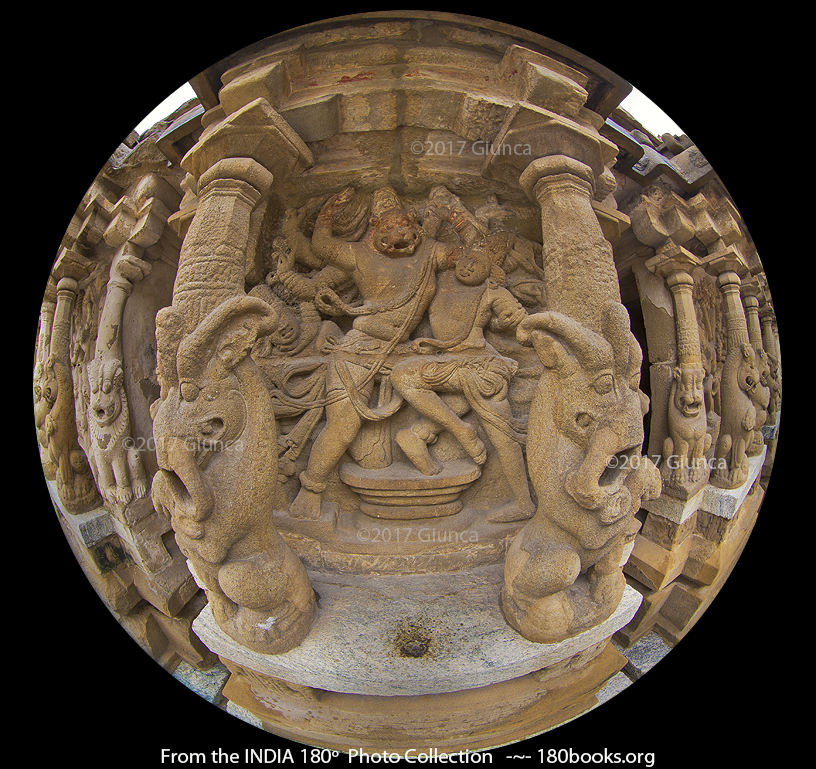
A bas-relief of Narasimha is killing the demon Hiranyakshipu, Kailasanathar Temple in Kanchipuram, India
Of course, the gods aren’t to be trifled with, especially one as clever as Lord Vishnu. One very late afternoon, in an attempt to prove his new powers to his son, Hiranyakashipu pointed to a column in his palace and asked Prahlada if Lord Vishnu was present. When he answered yes, Hiranyakashipu shattered the column with his sword. Immediately Lord Vishnu appeared as his lion-man avatar, Narasimha, took Hiranyakashipu to the doorway, put him on his lap and drove his tiger paw nails through his heart and killed him. As he lay dying he probably fully appreciated the cleverness of the gods. He had been killed at twilight which was neither night nor day; in a doorway that was neither inside nor outside; on the god’s lap which was neither earth nor space; using nails that were neither animate nor inanimate.
The photo of the bas-relief above depicts this story and is a prime example of Dravidian art and sculpture in the South Indian style. Kailasanathar temple was built between 685-705AD, is considered as the oldest one in Kanchipura in the state of Tamil Nadu.
จนกระทั่งหิรัณยกศิปุถามประหลาทกุมารว่าพระวิษณุมีอยู่จริงหรือไม่ ไม่มีโบสถ์ ไม่มีวัด แล้วเจ้าจะนั่งบูชาอะไร ประหลาทกุมารตอบว่าพระวิษณุอยู่ทุกหนแห่ง หิรัณยกศิปุหัวเราะเยาะแล้วว่า ถ้าพระวิษณุแน่จริงก็ปรากฏตัวออกมาเลย แล้วฟาดค้อนศึกกับเสาพระราชวังเข้าเต็มแรง ในที่สุดนรสิงห์ก็โผทะยานออกมาจากเสาและตะปบหิรัณยอสูรด้วยกรงเล็บที่ทรงพลัง จนหิรัณยกศิปุเสียท่าถูกนรสิงห์ลากออกมาตรงประตูพร้อมกับวางร่างหิรัณยกศิปุลงบนหน้าตัก แล้วฉีกร่างนั้นด้วยกรงเล็บจนสิ้นใจตาย ณ เวลาโพล้เพล้ เป็นอันว่าพรจากพระพรหมนั้นก็สลายสิ้นไป …ภาพนรสิงห์ด้านบนนั้นเป็นงานประติมากรรม ศิลปะดราวิเดียนที่อยู่บนผนังวิหารไกรลาสนาถ เมืองคันจีปุราม รัฐทมิฬนาฑู สร้างในช่วงปลายศตวรรษที่ ๗ ถึงต้นศตวรรษที่ ๘ แม้งานประติมากรรมชิ้นนี้จะเป็นหินทรายและอยู่ภายนอกอาคาร ผ่านแดดฝนมาโชกโชนเกือบสองพันปีแล้วก็ตาม ยังปรากฏงานศิลป์ให้เราได้เสพ
Manussiha is not Narasimha – มนุสสิหะ ในเมียนมาร์
In Myanmar, there’s an ancient mythological creature called Manussiha or Manuthiha that is a half-human, half-lion. Manussiha is the guardian of the Buddhist sites and pagodas. We captured the above photo of Manussiha at the Shwedagon Pagoda in Yangon, and you can read about this legendary ogress-eater on another of our blogs, HERE.
หลายคนคงเคยเห็น “ครึ่งมนุษย์-ครึ่งสิงห์” ที่พระมหาเจดีย์ชเวดากอง เมืองย่างกุ้ง ประเทศเมียนมาร์ ตำราโบราณพม่าเรียกว่า “มนูธิหะ” ส่วนปัจจุบันนิยมเรียก “มนุสสิหะ” สามารถพบเห็นในวัดวาอารามและศาสนสถานต่างๆ เช่นกัน โดยเป็นสัญลักษณ์ในทางป้องกันภยันตรายแก่ศาสนสถาน ดังภาพข้างบนนี้คือ มนุสสิหะ ที่อยู่ตรงรอบมุมฐานทั้งสี่ของเจดีย์ชเวดากอง … มีที่มาอย่างไร ตามไปอ่านที่บล็อก มนุสสิหะ นะคะ
Are you still with me? As much as I love mythology and learning the deeper meaning of art, sometimes it gets confusing, and the more I explain it, the more confusing it gets. Then too, some stories and motifs are universal parts of our collective unconscious, as Joseph Campbell noted, and need not be explained. Sawasdee~Namaste~Minglabar~See ya later!
พอแค่นี้ก่อนดีกว่าค่ะ เพราะสัตว์ลูกผสมบางตัวเมื่อปรากฏในแต่ละประเทศหรือทวีป ก็จะมีเรื่องราวต่างกันไปตามแต่วัฒนธรรมของท้องถิ่นนั้นๆ ***เรื่องราวรายละเอียดบางอย่างนั้นเป็นตำนานสากลและมีรายละเอียดอันสืบเนื่องกันมาจากจิตไร้สำนึกสะสมมาแต่อดีตกาล*** อ้าว! งงหนักเลยทีนี้!! ลองอ่านหนังสือของ โจเซฟ แคมป์เบล เกี่ยวกับเทพปกรณัมก็แล้วกันค่ะ จบบล็อกแต่เพียงเท่านี้ สวัสดี ~ นมัสการ ~ มิงกะลาบา ~ แล้วพบกันใหม่บล็อกถัดไปนะคะ!!
!!..คลิ๊กแผนที่..!! ดูภาพสวยๆ อ่านบล็อกสถานที่ท่องเที่ยวจาก THAILAND 180º ได้นะคะ อัพเดทเพิ่มเติมตลอดค่ะ
If you enjoyed this story, subscribe using the “Subscribe” button below, or visit our facebook fan page to comment Here
We’d LOVE to hear from you!
ผู้ติดตามอ่านบล็อก สามารถติดตามอัพเดทโพสต์บล็อกได้โดยสมัครสมาชิกที่บล็อกนี้ หรือ กดไลค์เฟสบุ๊คเพจของเราที่นี่ Here
Blog : Thai by Apisatha Hussadee Giunca
Blog : English by George Edward Giunca
About the Authors
Photographer George Edward Giunca, and his Thai wife, Apisatha, have traveled around Thailand armed with a circular fisheye lens to create a photo essay on the rich cultural diversity, and abundant natural beauty of the Kingdom of Thailand. Fleeing from angry water buffaloes, slapping huge mosquitoes, watching exotic festivals and religious rituals, gorging on delicious spicy food, applying aloe vera cream to sunburned skin, wading through rice paddies, getting drenched to the bone by heavy monsoon rains, and gawking at breath-taking scenery; made it a journey of epic proportions! The result is the book, THAILAND 180º. Later, they traveled extensively through Myanmar, Malaysia, and India, gathering a massive collection of 180º photos. They currently live in Chiang Mai where they continue to blog and are now working on a CHIANG MAI 180º book.
Here’s How to Order Your Copy of THAILAND 180º Collectors EditionToday!
In Thailand —>>>http://www.thailand180.com/thaiorder.html
The Rest of the world: We are offering our book on Amazon.com, below list price and I’ll pay for the shipping within the United States! http://amzn.to/1knDPRR
Not Familiar with Our Book???
This show details the origin of 180 Books, a series of art/travel books illustrated with a circular fisheye lens. By using infographics, pictures from our THAILAND 180º book, and never seen before images from our vault, we’ll demonstrate this unique lens and present our unique books.
Also, because there’s nothing to watch on TV, here’s a trailer about our book, “THAILAND 180”
Above is an interactive map of Thailand. If you click on a marker it reveals a photo from our THAILAND 180º book and a link to our blog article about the photo. Go Ahead~ Start Exploring ~Have Some Fun!


